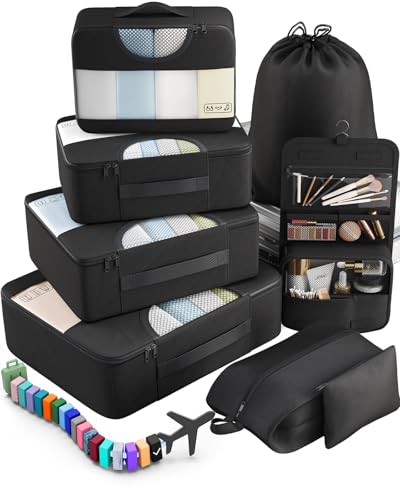In Kathmandu, they use Type C, D, and M power plugs and outlets. The voltage is 230V, and the frequency is 50Hz.
So, you’ll need a travel adapter in Kathmandu. Their plugs and outlets are different from the Type A and B ones we use back in the States.
Quick Overview of the Plugs in Kathmandu:
- Plug type in Kathmandu: C, D, and M
- Standard voltage: 230V
- Frequency: 50Hz
- Need a travel adapter? Yes, you do need a travel adapter
- Need a voltage converter? Probably needed for some devices
- Recommended plug adapter: Vintar Universal Travel Adapter Kit
All information is gathered from official sources like local power authorities, IEC standards, and firsthand traveler experiences to ensure accuracy.
The Only Travel Adapter You’ll Need in Kathmandu
Traveling to Kathmandu? You’ll need the right adapter to keep your devices powered up. We don’t sell them, but we’ve done the research so you don’t have to. Here’s the best one:
Recommended Travel Plug Adapter
by 1,000+ travelers on Amazon
If you’re already en route or at your destination and don’t have a power adapter, there’s usually no need to panic. You’ll likely find one nearby. But bringing your own next time saves you the hassle.
Kathmandu travelers frequently continue on to Bhutan, India, or Bangladesh. Plug types can vary, so double-check before you go.
Power Outlets in Kathmandu
In Kathmandu, they use Type C, D, and M power plugs and outlets.
Type C

Type C outlets have two round prongs and no grounding pin. Type E and F plugs usually fit too, but grounded plugs will need an adapter.
Type D

Type D outlets have three large round prongs in a triangular layout and typically only accept Type D plugs, although Type C plugs might fit loosely and are not recommended for safe use.
Type M

Type M outlets have three large round prongs like Type D but spaced farther apart, designed for high-power appliances, and only accept Type M plugs—Type C may fit, but it’s unsafe and not recommended.
Do You Need a Voltage Converter?
You’ll probably need a voltage converter in Kathmandu since your device’s voltage has to match the local power supply. In the U.S., we use 120V, but Kathmandu operates on a different voltage, so a converter is required.
Before plugging in your device while traveling, always check your device’s voltage label. If it says “100-240V, 50/60 Hz”, your device will work in most countries without the need for a voltage converter. This is common for modern electronics like laptops, tablets, and rechargeable devices.

Which Travel Devices May Need a Converter?
Want peace of mind while traveling? These top-rated voltage converters are a safe bet.
| Device | Need Converter? | Notes |
|---|---|---|
| Phone | ❌ No (usually) | Most modern phone chargers are dual voltage (100–240V) |
| Laptop | ❌ No (usually) | Check the power brick label for 100–240V |
| Hairdryer | ✅ Yes (often) | High wattage; many models are not dual voltage |
| Electric toothbrush | ⚠️ Check voltage | Some models are 110V only |
| Camera / DSLR | ❌ No (usually) | Most chargers are dual voltage |
| Power bank | ❌ No | Charges via USB, adapter is enough |
| Electric shaver / trimmer | ⚠️ Check voltage | Older or cheaper models may not support 230V |
| Tablet / iPad | ❌ No | All models are dual voltage |
| Portable fan | ✅ Yes (sometimes) | Many models are not compatible with 230V |
| Game console | ⚠️ Check voltage | Newer consoles like PS5 and Xbox are often dual voltage — check to be sure |
| Bluetooth speaker | ❌ No (usually) | Charges via USB |
| E-reader (Kindle, etc.) | ❌ No | USB charging only, no converter needed |
Top Travel Essentials to Pack
A few small extras can make a big difference while you’re abroad. These practical tools help you stay organized and avoid last-minute stress.
Digital Luggage Scale
Packing Cubes
Power Bank
More About Kathmandu
Kathmandu is the kind of place that hits you with noise, color, and energy the moment you land. Tucked inside a valley surrounded by hills, it’s a chaotic blend of ancient temples, rickshaw traffic, and rooftop cafés where monkeys occasionally drop by. There’s history everywhere—shrines at street corners, prayer flags over alleyways, and centuries-old courtyards hidden behind modern shops.
The city’s heart is Durbar Square, where old palaces and pagodas stand as reminders of Nepal’s royal past. It’s also where you’ll find the Kumari, a real “living goddess” worshipped by locals and tourists alike. Swayambhunath, or the Monkey Temple, offers one of the best views in town—after a bit of stair climbing and dodging actual monkeys, of course.
Even with the chaos, Kathmandu has its own rhythm. Morning prayer chants, afternoon street food smells, and evening chill at a local teahouse. It’s loud, gritty, and full of charm—the kind of place where one wrong turn leads to something unforgettable.
Kathmandu uses the same plugs and outlets as the rest of Nepal.




